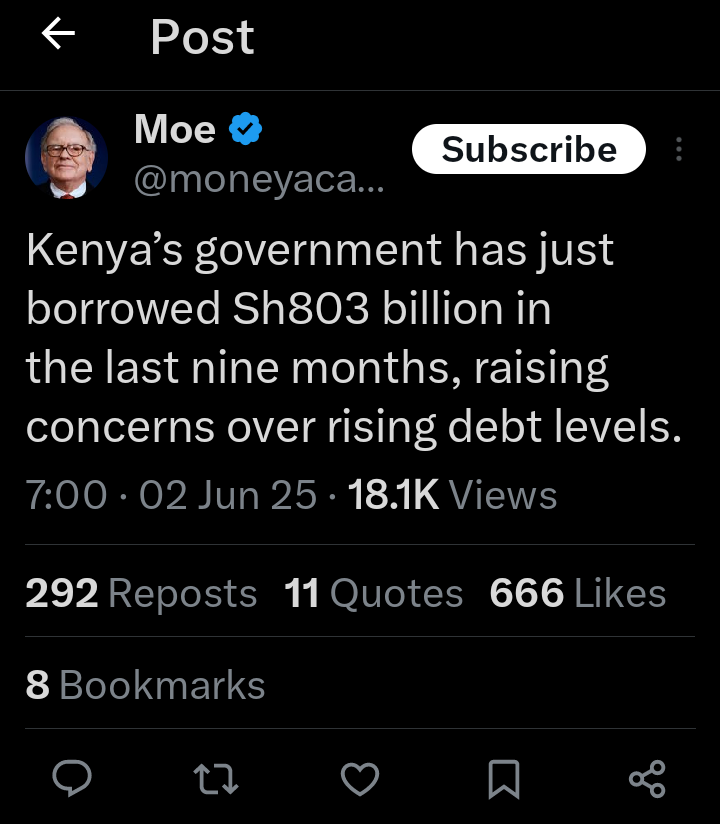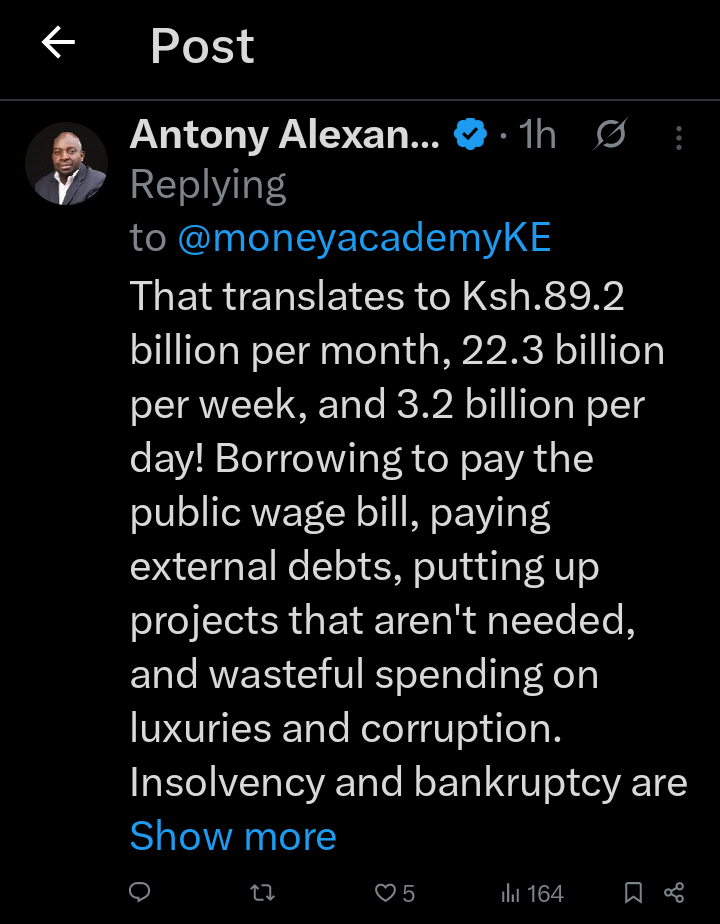Kenya’s government has borrowed Sh803 billion in the last nine months, sparking serious concern among economists, citizens, and international observers. This level of borrowing, posted on X by Moe (@moneyacademyKE), has pushed the country’s total public debt to Sh11.36 trillion by March 2025. That is an increase from Sh10.39 trillion in March 2024, mainly driven by domestic borrowing.
This rise means Kenya’s debt now stands at 70 percent of its GDP, which is considered a dangerous level by most financial experts.
The borrowing trend has continued despite warnings from the World Bank, which says Kenya faces a high risk of debt default.Much of this increase came from borrowing within Kenya, where domestic debt jumped by Sh890 billion to hit Sh6.12 trillion.

In comparison, external debt only grew slightly, by Sh70 billion, reaching Sh5.23 trillion. This means the government is now depending more on local sources like banks and other financial institutions to meet its spending needs.
The shift to domestic borrowing has caused banks to hold Sh2.6 trillion of the debt, up by 18.7 percent. Non-bank investors and non-residents also increased their share, holding a total of Sh3.33 trillion, up from Sh2.84 trillion.Paying back these loans is becoming more expensive.
The country is now spending an average of Sh83.66 billion every month just to cover interest on its debt. This is up from Sh70 billion a month last year. While interest rates on government securities like the 91-day Treasury bill have dropped to 8.9 percent from 16.7 percent a year ago, the large volume of debt still makes repayments very costly.

This is money that could have gone to improve hospitals, schools, or roads. Instead, it is being used to repay loans, which reduces the funds available for public services.
The impact of this borrowing is being felt across the economy. Businesses are struggling to access affordable loans because the government is taking a large share of the available money from banks.
This could hurt job creation and economic growth. Meanwhile, the Kenyan shilling has strengthened, moving from 161.35 in January to 129.23 by May.
This has slightly helped reduce the external debt burden, since a stronger currency means the country pays less when converting foreign loans.
Still, the overall economic strain remains. Kenyans online have been vocal in reacting to these figures. In response to Moe’s post, many expressed anger and worry. Some users, like Antony Alexanderia Irungu, broke down the borrowing into daily amounts, saying the government is borrowing Sh3.2 billion every day. Others blamed the current administration for mismanaging funds and called for more transparency.

Moe’s analysis received wide attention, with users pointing fingers at rising corruption and wasteful government spending as the root causes of the growing debt.
Historical trends show that Kenyan governments, both past and present, have used borrowing as a way to fund development projects and cover budget deficits.
However, this has now reached worrying levels. According to the Treasury’s Annual Public Debt Management Report, the total debt was 65.7 percent of GDP in June 2024, down from 72.0 percent the previous year, mainly due to reduced external debt.
But domestic debt has kept rising, which now poses a bigger risk to financial stability.
If nothing changes, Kenya could soon face even higher taxes, poorer services, and deeper economic challenges. The warning from the World Bank should not be ignored. The country is walking a tightrope, and the decisions made today will shape Kenya’s future for years to come.
Don’t forget to follow us in X @leakednewske and on facebook @leaked.co.ke for timely updates.





















Add Comment